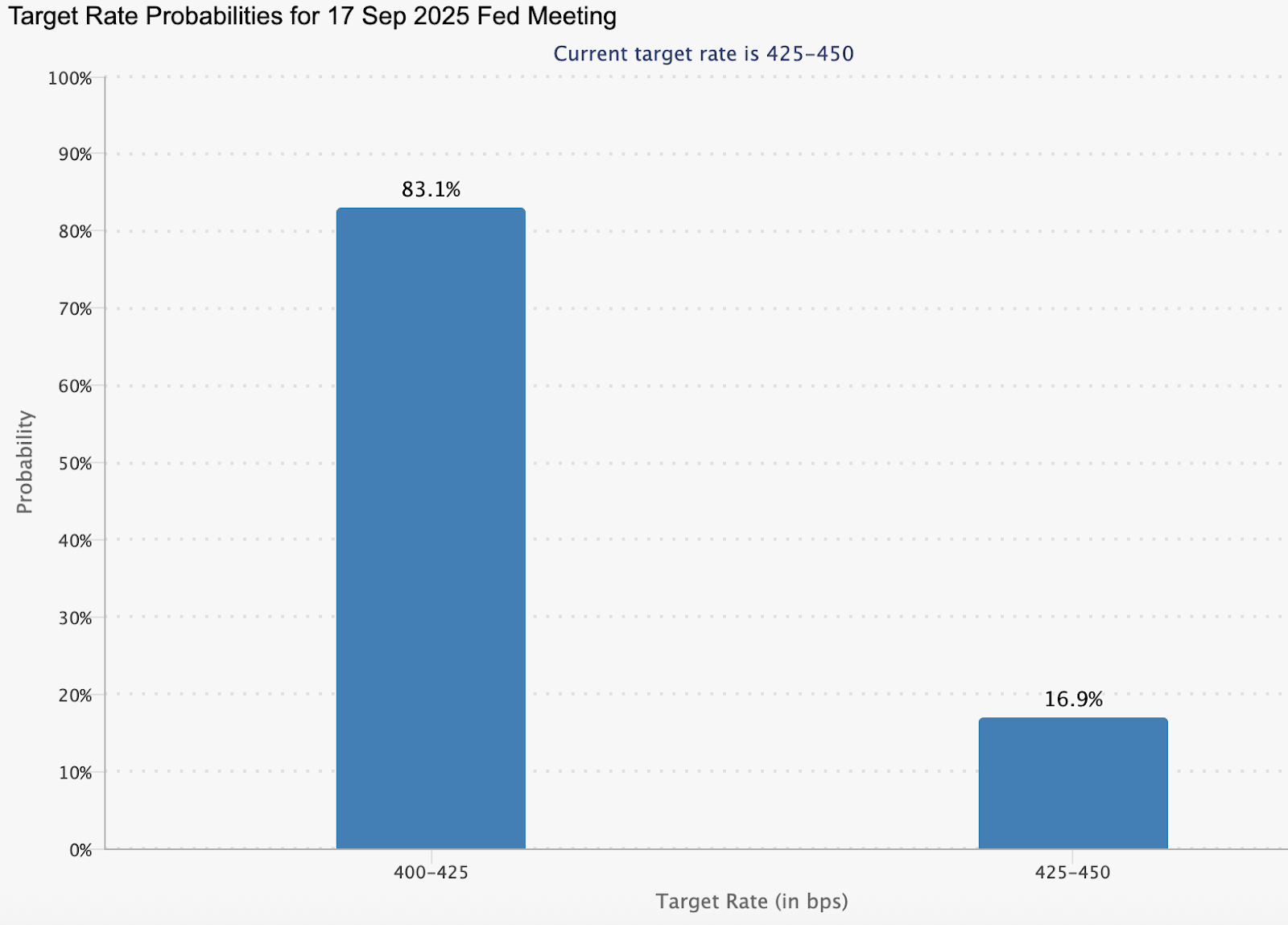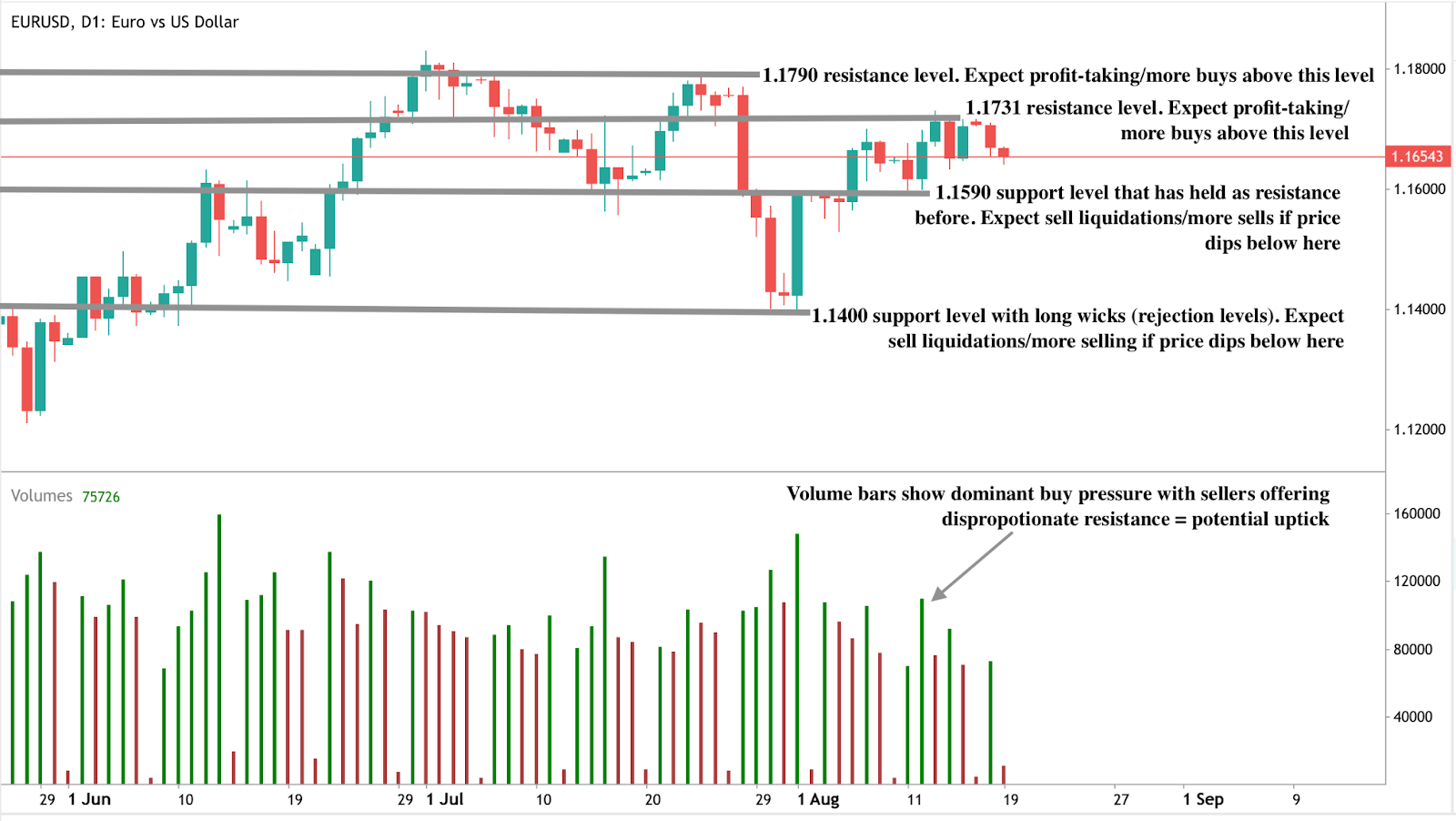What slowing U.S. manufacturing signals for EUR/USD traders in 2025

U.S. manufacturing contracted in July, raising stagflation concerns and putting pressure on the dollar. The ISM Manufacturing PMI fell to 48.0 in July 2025, while new orders saw a slight boost to 47.1 compared to June’s 46.4. The employment index dropped slightly to 43.4. At the same time, prices paid for inputs remained elevated in July, signalling persistent inflation. This combination of weak growth and high prices leaves the Federal Reserve in a difficult position and places EUR/USD traders at a key turning point.
Key takeaways
- ISM Manufacturing PMI at 48.0 marks four straight months of contraction.
- New orders and employment index at 47.1 and 43.4% confirm industrial weakness.
- Input costs remaining elevated fuel stagflation risks, forcing a difficult Fed choice.
- Markets see an 83% probability of a September Fed rate cut, but inflation could delay.
- EUR/USD is trading in a buy zone, with potential support at 1.1590 and 1.1400 and resistance at 1.1731 and 1.1790.
U.S. manufacturing PMI slowdown highlights stagflation risk
The weakness in U.S. manufacturing has become one of the clearest signals that the economy is losing momentum. The PMI contraction underlines a decline in industrial demand, with new orders jumping slightly while employment in manufacturing slides further.

This erosion of the factory base matters because it traditionally anchors U.S. growth and supports dollar strength. At the same time, higher input costs show that inflationary pressures remain embedded. A prices-paid index nearing 64.8 means companies are paying more to produce less, a combination that squeezes margins and weighs on hiring.
Economists warn that this backdrop resembles the stagflation environment of the 1970s, when growth stalled but prices kept rising - a period that also saw sustained dollar weakness.
Fed policy dilemma and dollar outlook
The Federal Reserve now faces a familiar bind. On one hand, markets are pricing an 83% chance of a rate cut in September, with further cuts expected into October and December.

These expectations stem from the slowing economy, weak consumer sentiment, and falling industrial activity. On the other hand, stubborn inflation tied to higher input prices could push the Fed to keep rates steady or even maintain a hawkish tone to reassure markets.
This tug-of-war leaves the dollar exposed. Rate cuts would reduce its yield appeal and weaken the greenback, giving the euro an opportunity to extend gains. However, if the Fed signals hesitation or delays easing, the dollar could regain temporary strength and cap EUR/USD advances. Traders remain divided, with some positioning for long-term euro upside while hedging against near-term dollar rebounds.
Geopolitical drivers support euro resilience
Beyond U.S. domestic policy, geopolitics continues to shape the EUR/USD narrative. The Trump-Putin summit in Alaska raised the possibility of a Ukraine ceasefire, though no breakthrough has yet been confirmed. A durable peace agreement would be euro-positive by lowering global energy costs, improving confidence in Europe’s industrial base, and reducing risk premiums tied to the war.
Lower oil and gas prices, particularly, would benefit Germany and other energy-intensive Eurozone economies, restoring some of the competitiveness lost since 2022.
Analysts at UBS note that a meaningful de-escalation could propel EUR/USD toward 1.21 by year-end, adding to euro strength if Fed easing overlaps with geopolitical stabilisation.
Manufacturing policy uncertainty adds to risks
Tariffs and industrial policy are complicating the backdrop further. Trump’s sweeping tariffs on over 100 countries are raising costs for U.S. manufacturers instead of lowering them.
Economists warn that inconsistent trade policy - frequent changes, legal challenges, and lack of targeted focus - discourages long-term investment in factories. The Joint Economic Committee estimates nearly $490 billion in lost manufacturing investment by 2029 if tariff uncertainty persists.
This matters for FX markets because a weaker, less competitive U.S. manufacturing base reduces long-term support for the dollar. Unlike targeted policies under the Biden administration (which boosted semiconductors and EV investment), broad tariffs without a clear industrial direction risk creating short-term volatility while eroding long-term competitiveness.
EUR/USD technical levels
At the time of writing, the pair is seeing a downturn within a buy zone - hinting at a potential move up. This bullish narrative is buttressed by volume bars showing dominant buy pressure that could be countered if sellers push with conviction. If sellers push down further, we could see the prices held at 1.1590 and 1.1400. Conversely, if the upmove resumes, we could see bulls held at the 1.1731 and 1.1790 resistance levels.

Investment implications
For traders, the current backdrop combines short-term uncertainty with medium-term opportunity. U.S. factory weakness and stagflation risks suggest the dollar’s structural strength is eroding, particularly if the Fed is forced to ease rates. However, sticky inflation could provide short bursts of dollar support, keeping EUR/USD capped until clearer policy signals emerge.
A tactical approach may favour buying dips above 1.1590 with an eye on a breakout if geopolitical conditions improve. Longer-term, a Ukraine peace agreement combined with Fed rate cuts could push EUR/USD toward the 1.20–1.21 range by late 2025, while persistent policy uncertainty around U.S. tariffs and manufacturing investment will remain a drag on
Frequently asked questions
Why does slowing U.S. manufacturing matter for EUR/USD?
Because weak growth reduces dollar demand while inflation complicates Fed policy, leaving the greenback vulnerable.
What is stagflation, and why is it relevant here?
It is when low growth coincides with high inflation, limiting central bank options and historically weakening the dollar.
Could a Ukraine peace deal affect EUR/USD?
Yes. A ceasefire would lower energy costs, boost Eurozone confidence, and strengthen the euro.
Where are the key EUR/USD levels now?
Support is at 1.1590 and 1.1400. Resistance is at 1.1731 and 1.1790.
Disclaimer:
The performance figures quoted are not a guarantee of future performance.



